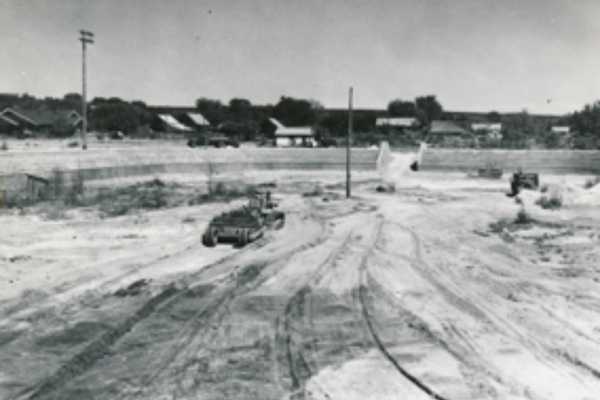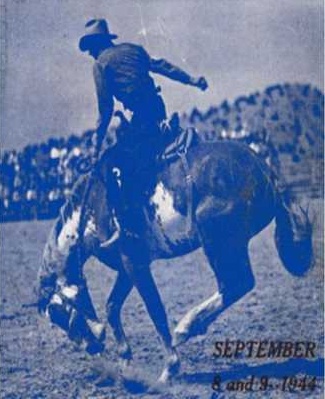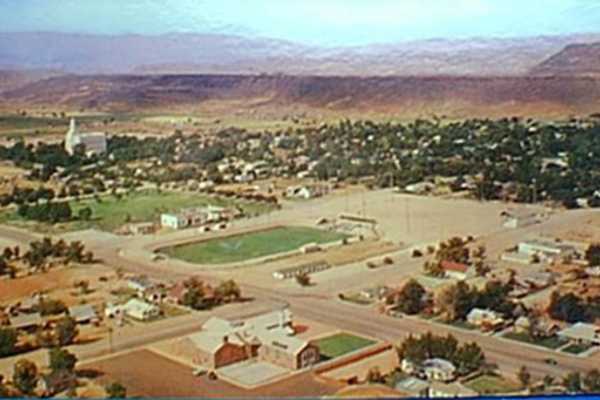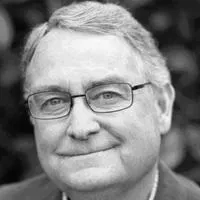

PET HEALTH ARTICLES

A Gift from the Greatest Generation
World War II was over, and folks in St. George were getting back to the kind of community life they’d always enjoyed. On a Sunday afternoon in the spring of 1946, Neal Lundberg and Ez McArthur saddled up and set out on a horseback ride through town. In those days, it was common for some to mount up for a leisurely Sunday ride rather than hop in the car for a drive. The two were civic-minded men (three decades later Neal would become mayor of St. George), and both were leaders of the St. George Lions Club, which had sponsored the annual Dixie Roundup Rodeo since 1935.
As they rode from the southwest end of the valley toward the southern edge of town, they encountered their mayor, Eric Snow, who was also out for a Sunday ride. Together the three rode to where the old grandstand, rodeo grounds, and racetrack stood on 100 South, between 300 and 400 East. They stopped their horses near where Legacy Elementary School now stands, and Mayor Snow made a suggestion.
“Gentlemen,” he said, pointing toward a natural indentation in the earth to the east, “this is where you ought to build your new rodeo grounds.” He told them the city owned the property and had long-range plans to build a park there, but it would be years before enough funds could be set aside for the project. The Lions Club already had a lease from the city on ground below the red bluff north of the Boulevard with a natural amphitheater. But Mayor Snow’s suggestion hit home with Neal and Ez. Now that the war was over, the club was ready to get to work on a new venue for the annual Dixie Roundup celebration.

They straightway took the idea to the next club meeting where it was enthusiastically accepted. Then they went to the city council and found ample support for switching the lease. By September of 1947, one of the greatest ever outpourings of the Dixie Spirit resulted in completion of the Lions Dixie Sun Bowl, an arena as singular and monumental to St. George as the Coliseum is to Rome or Fenway Park is to Boston.

I grew up just a couple of blocks south of that venerable stadium. By the time I was old enough to perceive the world around me, the Sun Bowl had become this community’s great autumnal gathering place. It seemed the whole town convened there on perfectly mild September nights for Dixie High and Dixie College football games. In the days when Sark Arslanian and Walt Brooks walked the Sun Bowl sidelines coaching the Rebels and the Flyers, I belonged to an army of boys eight to ten years old who roamed the walkway above the hard concrete seats, circling the stadium, lap after lap, dreaming of football glory.
Then, as the September slant of the sun drew us deeper into the month, there were always three successive magnificent nights when the Sun Bowl lights glared a little brighter and the buzz in the air was a little more intense. Those were the three nights when the rodeo announcer’s voice echoed off the red bluffs, reverberated between the black ridges, and blasted a sense of joy, excitement, and community pride so deep into our hearts the echo still trails on. The Lions Dixie Roundup Rodeo was, and still is for thousands, the grand pinnacle of the southern Utah year, a perennial symbol of all that is real and true and good about the Dixie Spirit.

The St. George Lions Club built the Sun Bowl with the donated money and labor of every-day members of the community. It was there when I was born, like a birthright, something I took for granted all the time I was growing up. Devout members of the St. George Lions Club have nurtured, maintained, and improved it for four or five generations now, and though it is no longer the singular community gathering place it once was, it still stands as a reminder of the selflessness of the Greatest Generation.
I played one year of JV football on the Sun Bowl’s legendary turf before my gridiron dreams gave way to a passion for rodeo. That’s when I began to appreciate the arena for its original purpose—as home of the annual Lions Dixie Roundup.
On rodeo nights, my buddies and I did not roam the walkway above the stadium like we did at football games. Instead, we weaseled our way down to the arena floor and sat against the wall north of the bucking chutes among the rough stock riders. We were bright-eyed little groupies looking for a chance to shake hands with, or maybe even talk to, some of our greatest heroes.

One year, we stood on the back of the chute with Larry Mahan, and he let us help him set his bull rope on Swany Kirby’s humongous Scottish Highlander bull named Fuzzy Four. Mahan was the Babe Ruth of rodeo, and that night in the late 1960s, he made an unbelievable ride on the tight-spinning, long-haired yellow bull that was so long he couldn’t fit in one chute. After the ride, when Mahan shook my hand and patted me on the back, I sank into a star-struck stupor that a half century later still hasn’t worn off.
One Roundup night in the early 1970s, the Hollywood actor James Caan came to the Roundup. He’d taken up team roping, and St. George was one of the stops on a rodeo tour he’d embarked upon between movie roles. I sat next to him atop the equipment shed behind the bucking chutes and asked him dumb questions while he scouted the roping steers and rated the barrier to determine how quick he’d need to leave the box.
The Godfather was fresh on everyone’s mind at the time. The film had haunted me when I saw it only months earlier. And there I sat, next to a fully resurrected Sonny Corleone, who had been shot to pieces in one of the most gruesome scenes in cinematic history.
But the highlight of my behind-the-chutes forays at the Dixie Roundup was the night Chris LeDoux drew up in the bareback riding. It was September of 1974. I was a college student by then with my own dreams of going down the road as a bareback bronc rider. Chris LeDoux was not yet the world champion he would later become nor was he the superstar recording artist he would even later become. But he was the up-and-comer everyone was talking about. He had drawn a Kirby bucking horse named Hancock, which happened to be the same horse I’d ridden in the Roundup the year before. I used that as my calling card when I approached him behind the chutes that night.

I shook Mr. LeDoux’s hand and offered him some information about his draw. He courteously listened and thanked me in his Mississippi-Texas drawl, then invited me to help him set his riggin’.
Hancock didn’t have a lot of kick that night, and Chris LeDoux finished out of the money. He walked back to the chute, dusted himself off, gathered his gear into his bag, tossed it over the top cable of the Sun Bowl fence, climbed up and out of the stands, headed for the airport, and flew to Pendleton or Albuquerque…and kept on going until he finally won the gold buckle in 1976.
Years later, Chris LeDoux returned to the Sun Bowl, not as a bronc rider this time but as a legendary country singer with six million albums sold.
I competed on rodeo teams for Dixie College and BYU before my horseback dreams faded into the sunset, and I made the transition from rider to writer. Over the past four decades, I’ve been a spectator at the rodeo, watching how the great succeeding generations of the Lions Club continue to produce the same kind of close-to-the-bone spectacle they have for ninety years; watching all the greats who’ve come to St. George to ride, including Shawn Davis, Lewis Feild, Tom Ferguson, Leo Camarillo, John Holman, Joe Marvel, Don Gay, and Roy Cooper; and taking my seat on the hard concrete of the Sun Bowl, the same gunite-formed concrete benches my father-in-law, LeGrand Frei, built as a young man just home from the war in the South Pacific, where he was a gunner in a B-25 bomber.
LeGrand was just one of a legion of townsfolk who helped build the Sun Bowl. It was a gift to the community from the Greatest Generation, something we should treasure and hold dear for generations to come.
